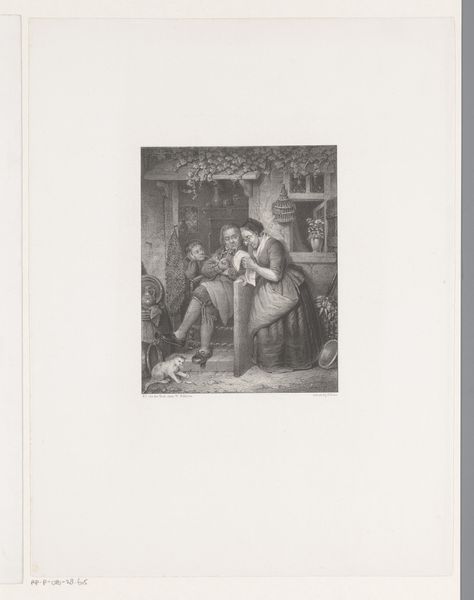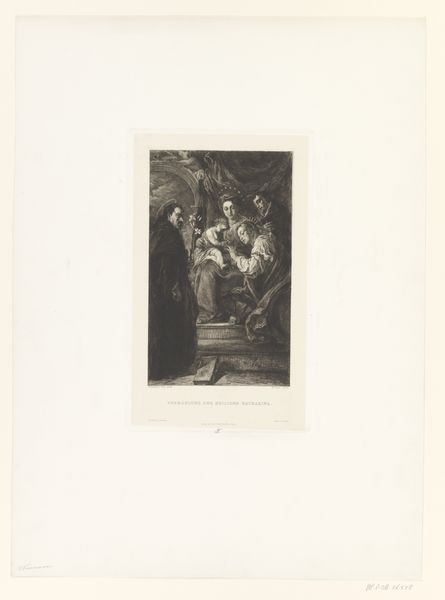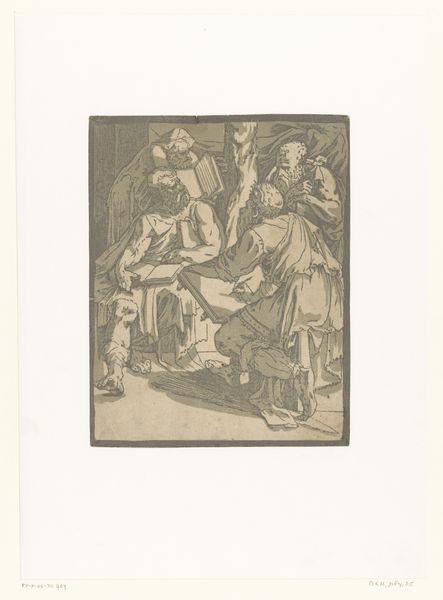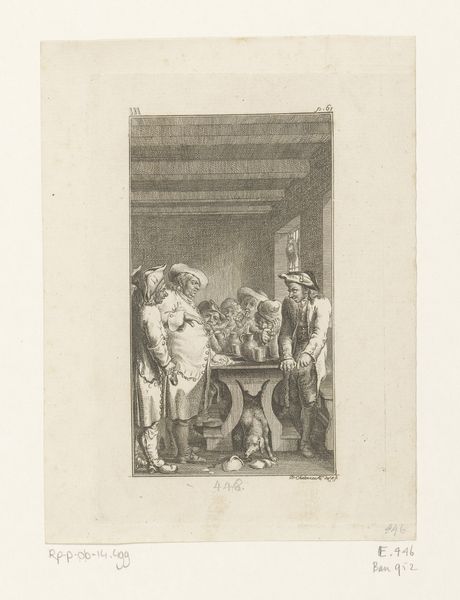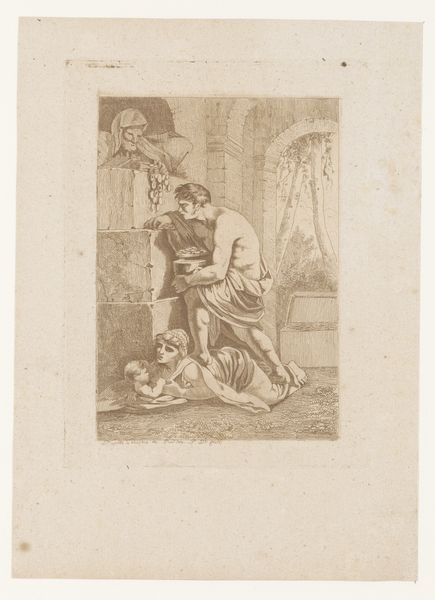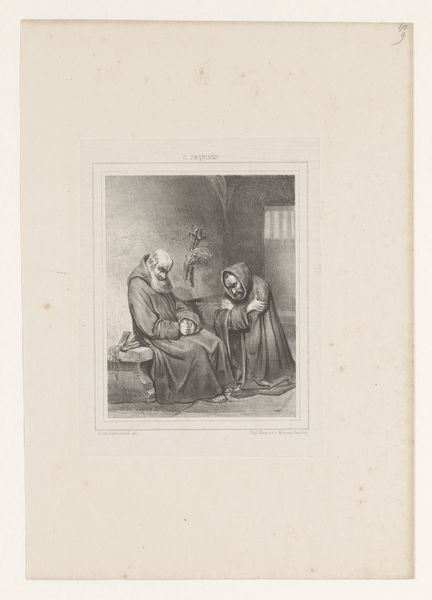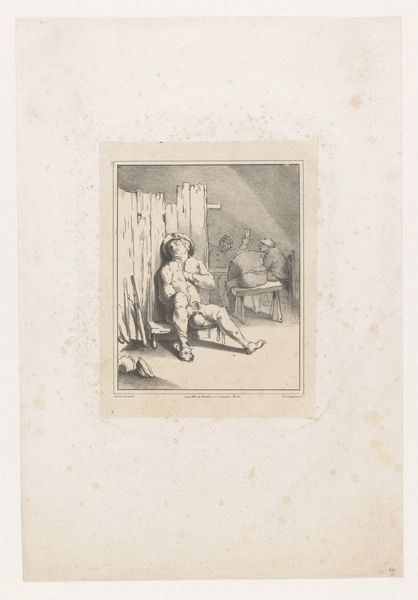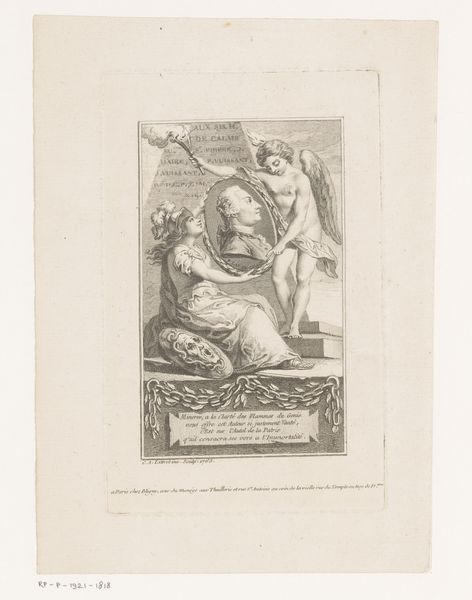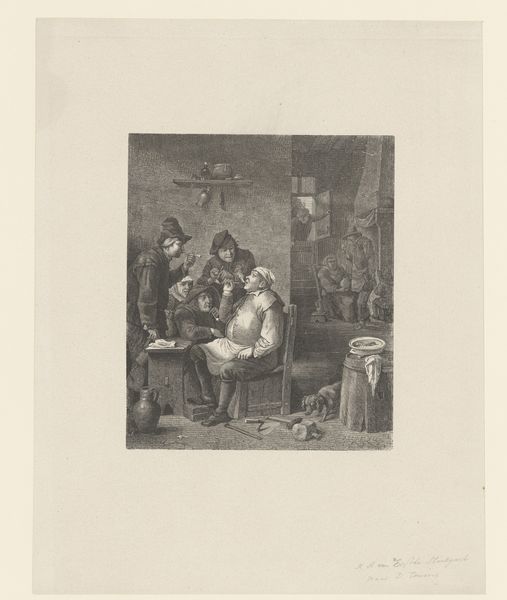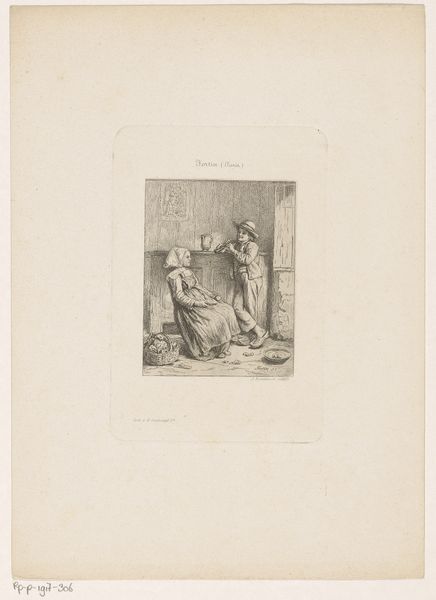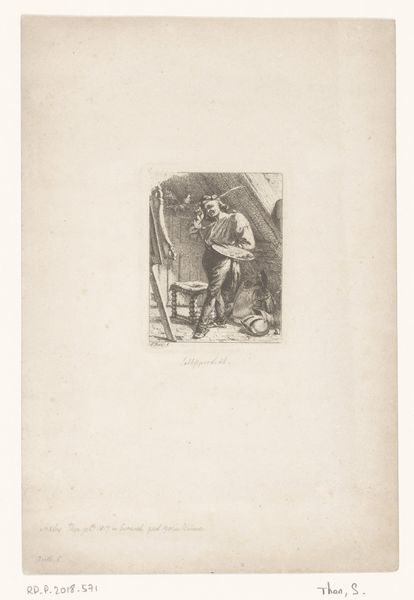
print, engraving
#
portrait
# print
#
figuration
#
line
#
history-painting
#
italian-renaissance
#
engraving
Dimensions: height 174 mm, width 138 mm
Copyright: Rijks Museum: Open Domain
Editor: This is "Standing Man and Seated Woman," made sometime between 1502 and 1532, attributed to Ugo da Carpi. It’s an engraving… or rather, a print, in subdued grey tones. It feels very… contained, almost like a stage setting. What story do you see unfolding here? Curator: Ah, it’s more of a snippet of a story, isn’t it? The Renaissance loved these little dramatic glimpses. What grabs me is the woman's posture. Bent over in thought, maybe grief? What do you suppose she's contemplating? Or, perhaps, refusing to contemplate? The man almost seems to be offering a solution, wouldn’t you agree? Editor: He does! He’s leaning in, extending a hand. It feels like such an intimate moment captured with this incredible…precision. Is this a typical scene from the Italian Renaissance? Curator: In a way, yes. Remember, the Renaissance was obsessed with humanism – exploring human emotion and experience. They used classical narratives to portray stories, but these narratives where almost exclusively of elite and religious narratives and people, of course. And these prints? They made these images accessible, widespread… relatable, even to those who may have struggled to read but knew what the image might stand for. Look closely at their robes, can you draw comparisons to Roman images you may have encountered before? Editor: That's a great point - the way art could suddenly be so widely distributed. Their garments have similar forms! What I didn't realize before is the political influence in the common availability of art pieces, because without mass production it's harder to send your message across the state. Thank you! Curator: You know, when you start connecting those dots, suddenly the past feels a lot less… distant, doesn't it?
Comments
No comments
Be the first to comment and join the conversation on the ultimate creative platform.
